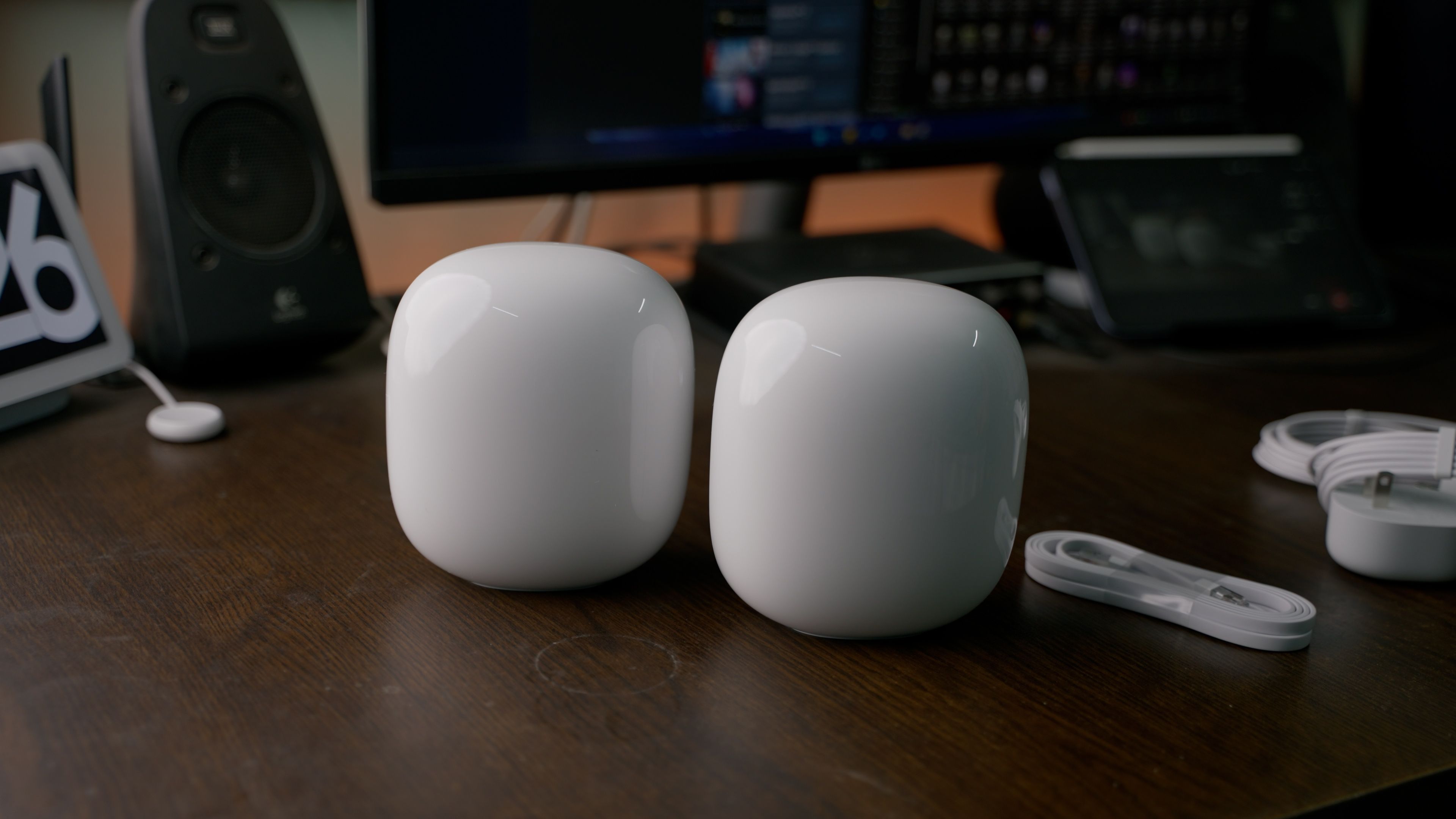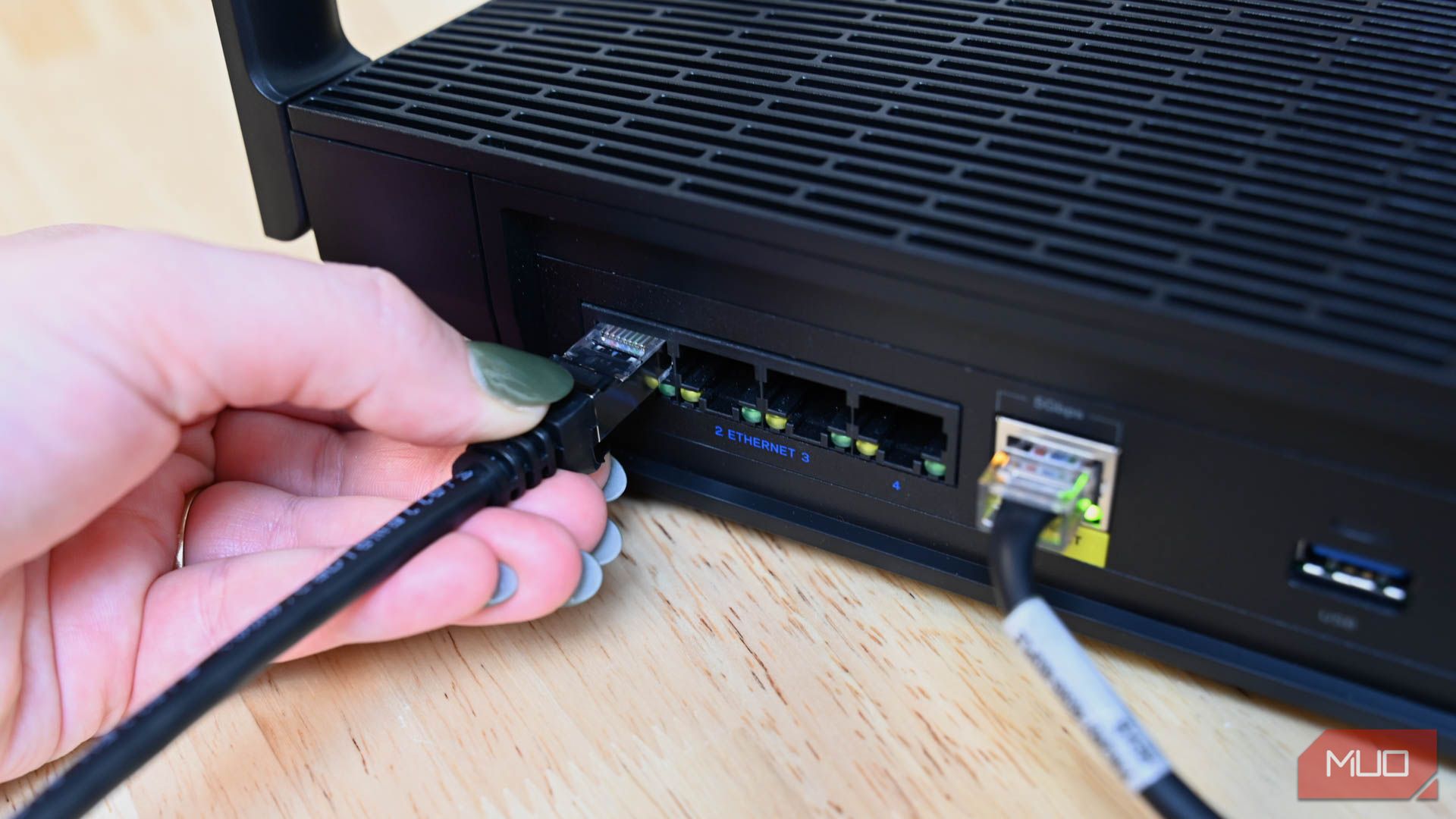I used to blame my internet provider for sluggish speeds—until I realized the problem was right in my living room. After making a few simple adjustments, my internet went from frustrating to fast.
6
Keep My Router Software Updated
Just like your phone or computer, your router runs on software that needs regular updates. These updates are crucial since they tackle different issues. Software updates can add new features, fix bugs, patch security holes, and improve performance and stability. I used to ignore this step until I realized that outdated firmware could be the reason behind random disconnects and sluggish speeds.
Check regularly and install updates as soon as they’re available. Some newer routers update automatically, but many older ones require you to log in manually—usually by entering an IP address like 192.168.1.1 in your browser. You can refer to your router’s manual for instructions on how to do so.
5
Restart My Router Occasionally
It may sound simple, but restarting your router can resolve a surprising number of internet issues. Just like rebooting your phone can fix various problems, restarting your router can also resolve temporary glitches.
Routers can build up memory glitches, background processes, and minor errors that can slow them down. Restarting clears temporary memory, refreshes the network, and helps the router run more efficiently. I restart my router whenever I experience internet issues to ensure it’s my ISP’s network that’s the problem and not the router.
You don’t need to restart it every day, but doing it every couple of weeks—or when your internet feels sluggish—can keep things running smoothly. You can unplug the router, wait about 10 seconds, and plug it back in. Some routers allow you to schedule automatic reboots during off-hours, like late at night, so you never have to think about it.
4
Limit Connected Devices
Your Wi-Fi might be fast on paper, but every device connected to it shares the same limited bandwidth—and that’s where things can slow down. Think of bandwidth as a single pie—more connected devices mean smaller slices for each. If too many devices are trying to stream, download, or update simultaneously, each one receives a smaller share of the available bandwidth.
In my house, I noticed that my video calls would lag or drop when other devices were actively performing bandwidth-intensive tasks. Even idle devices can use bandwidth for background updates and syncing. Smart home gadgets, such as cameras, thermostats, and voice assistants, remain constantly connected to the internet even when not actively in use. Phones and laptops run automatic updates or cloud syncs.
Whenever my internet gets sluggish, I disconnect devices that are not in use to free up bandwidth for active ones. But you don’t need to disconnect everything else if your router has so-called Quality of Service (QoS) settings, which allow you to prioritize network traffic on your router.
3
Stay Closer to the Router
One of the simplest ways to achieve faster and more reliable internet is to reduce the distance between your device and the router. Wi-Fi signals weaken as they travel through walls, ceilings, furniture, and even people. This is especially true for the faster 5GHz and 6GHz bands, which have a shorter range than the 2.4GHz band. The farther you are, the more your speed and signal strength drop.
One clear sign of weak Wi-Fi is watching the signal bars on your device disappear as you move farther away from the router. In my case, whenever I walk into the bedroom, the Wi-Fi icon drops from full bars to just one or two. That may not seem like a big deal, but it directly affects speed, making even simple tasks, such as chatting with friends on WhatsApp, frustrating.
Whenever I need to perform any bandwidth-intensive activity, such as streaming content, I must be in the living room or nearby rooms for the best experience. This setup works for me, and I don’t mind the minor inconvenience that comes with it, since my router is already located at the center of the house and I rarely use my phone or laptop in the bedroom.

Related
What I Wish I’d Known About Mesh Wi-Fi Before Spending Thousands of Dollars
Mesh Wi-Fi is fantastic, but there are more considerations than you may realize.
If your router is in your far-flung home office, try moving it to a central spot in the house. For example, if your living room is at the center and your bedroom and office are on either side, you should place it in the living room. If moving the router to a more central spot doesn’t fix the problem, I recommend using a mesh Wi-Fi system like the ASUS ZenWiFi AX6600 or Amazon eero 7.
2
Use the Right Wi-Fi Band
Modern routers broadcast on up to three different frequency bands: 2.4GHz, 5GHz, and 6GHz (found in newer routers). Each band has its strengths, and choosing the right one can make a noticeable difference in your internet speed and reliability.
The 2.4GHz band offers a longer range and better wall penetration, making it ideal for devices far from the router or in areas with thick walls. However, it’s slower and more prone to interference because many household devices—such as microwaves, baby monitors, and Bluetooth gadgets—also operate in this band. The 5GHz band, on the other hand, provides faster speeds and less interference but has a shorter range. The 6GHz band is faster and has even less congestion, resulting in less interference.

Related
The Most Common Wi-Fi Standards and Types, Explained
Confused by the various Wi-Fi standards in use? Here’s what you need to know about Wi-Fi 6, Wi-Fi 6E, and older wireless standards.
My Wi-Fi router is dual-band, utilizing a single 2.4GHz band and another single 5GHz band, which gives me flexibility depending on where I am in the house or what I’m doing online. However, I mostly connect to the 5GHz band because it gives me better performance when I’m streaming or downloading content.
If you have a dual-band router, make sure you use the 5GHz band. However, if your router supports the 6GHz band, you may get even better performance using it instead of the 5GHz band.
1
Use a Wired Connection Whenever Possible
While Wi-Fi is convenient, it’s not always the fastest or most reliable option—especially if you’re gaming, streaming in 4K, or working with large file uploads. It’s why I use an Ethernet connection wherever I can. A wired Ethernet connection offers a direct line from your device to the router, eliminating interference, signal loss, and congestion that can plague wireless networks.
Wired connections typically offer lower latency and a more consistent connection for demanding tasks compared to Wi-Fi. This can be the difference between smooth video calls and choppy ones, or winning a game versus lagging out at a match-deciding moment. That’s why I switched my smart TV to Ethernet.
If your router is in another room, you don’t necessarily have to run a cable across the house. Powerline adapters or Multimedia over Coax (MoCA) kits can extend your wired connection using your home’s existing electrical or coaxial wiring—no drilling required.
Sure, using Ethernet may not be feasible in all scenarios, as not all devices support the technology. However, for devices that can, such as laptops, desktops, smart TVs, and gaming consoles, using a wired setup is a game-changer. For devices that don’t have an Ethernet port, you can use UGreen’s USB to Ethernet adapter or a similar adapter.
Fast, reliable internet isn’t just about your plan. You may be paying for gigabit speeds, but interference, congestion, and poor setup can significantly reduce the speeds you receive. But with these simple adjustments, you can get what you pay for. Try these tricks, and you might be surprised just how much faster your connection can feel.


